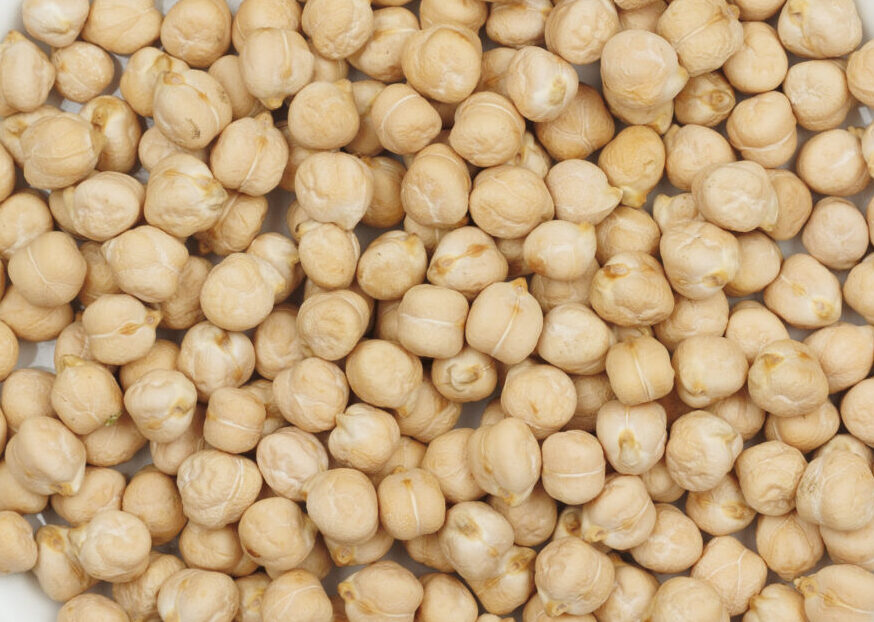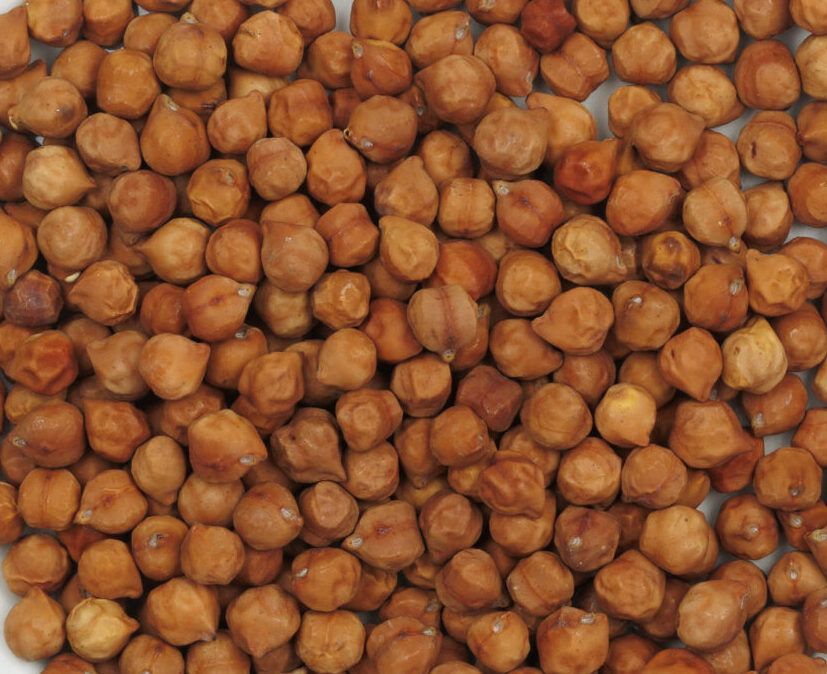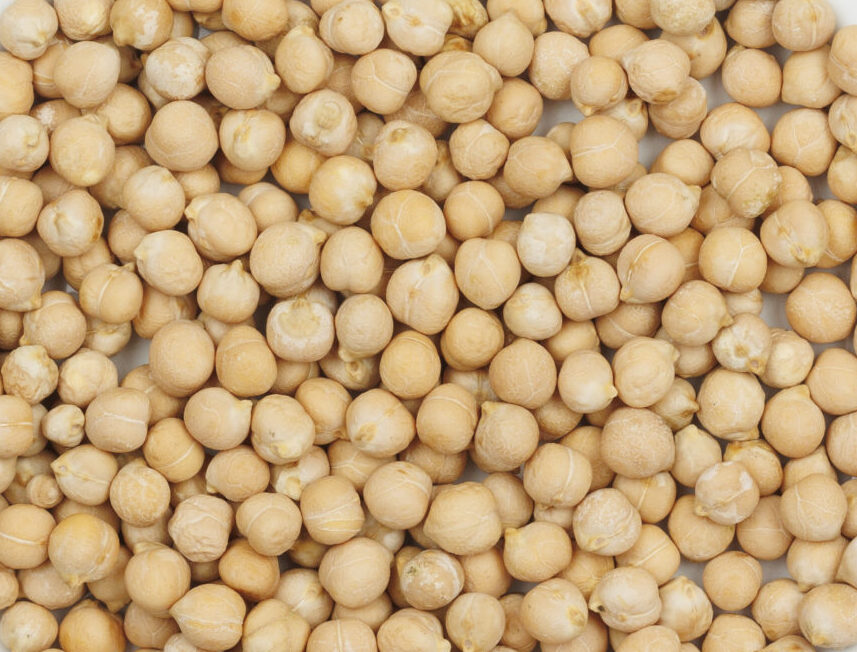Market Class: Kabuli Chickpea
Year Released to Seed Growers: 2021
Sub-licensed Outside of SK: McDougall Acres
International Distribution Rights: Not assigned
Breeder: Dr. Bunyamin Tar’an, Crop Development Centre, University of Saskatchewan, Saskatoon, SK
Plant Breeders Rights: PBR’91

Description
Kabuli chickpea variety CDC Pasqua (3652) is a large seeded kabuli chickpea. Although this variety is lower yielding, the main advantage is the large seed size, capable of producing 10mm seed. In 5 years of testing in the Chickpea Regional Variety Trials (2019 – 2023), CDC Pasqua yielded 3% lower than the historical check variety Amit in both the brown and dark brown soil zones. Compared to the current check, CDC Lancer, CDC Pasqua yields 86% in the brown soil zone and 92% in the dark brown soil zone (Table 1). Compared to the dominant variety CDC Leader (in terms of acreage in SK), CDC Pasqua yields 8% lower in the brown soil zone and 3% higher in the dark brown soil zone. Statistical analysis of 6 years of long-term Regional Variety Trial data ranked CDC Pasqua 7th for yield in the brown soil zone and 6th in the dark brown soil zone among 8 historical and new kabuli chickpea varieties (Figure 1). CDC Pasqua is rated “late” for maturity. In 5 years of regional variety trial data, CDC Pasqua matured the same as CDC Leader but 2 days later than CDC Lancer (Table 2). CDC Pasqua has imazamox herbicide tolerance (Solo ADV as per PMRA label registration). CDC Pasqua has PBR’91 protection.
Strengths
- Herbicide tolerance (imazamox)
- Very large seed
Neutral
- Similar maturity compared to CDC Leader
- Similar disease resistance characteristics as CDC Orkney or CDC Lancer
Weaknesses
- Lower yield than CDC Lancer or CDC Orkney
Table 1: Performance data of chickpea varieties from the Co-op and Regional Trials in Saskatchewan
| Variety | Herbicide Tolerance: SOLO® ADV (Imazamox) | Type | Yield (% CDC Lancer) | Height (cm) | Days to flower | Maturity Rating | Ascochyta Blight2 | Seed shape | Seed Coat Colour | Seed Weight (g/1000) | |
| Area 11 | Area 21 | ||||||||||
| CDC Lancer | YES | Kabuli | 100 | 100 | 40 | 52 | M | 4.4 | Ram-head | Beige | 353 |
| Amit | no | Kabuli | 89 | 95 | 46 | 56 | L | 4.4 | Round | Beige | 257 |
| CDC Frontier | no | Kabuli | 97 | 103 | 44 | 55 | L | 4.5 | Ram-head | Beige | 349 |
| CDC Leader | no | Kabuli | 94 | 89 | 41 | 53 | M | 4.6 | Ram-head | Beige | 385 |
| CDC Orion | no | Kabuli | 85 | 89 | 43 | 51 | L | 5.1 | Ram-head | Beige | 426 |
| CDC Orkney | YES | Kabuli | 99 | 103 | 43 | 53 | ML | 4.7 | Ram-head | Beige | 359 |
| CDC Palmer | no | Kabuli | 96 | 92 | 41 | 52 | ML | 4.9 | Ram-head | Beige | 413 |
| CDC Pasqua | YES | Kabuli | 86 | 92 | 42 | 52 | L | 4.6 | Ram-head | Beige | 417 |
| CDC Pearl | YES | Kabuli | 98 | 101 | 43 | 52 | ML | 4.4 | Ram-head | Beige | 291 |
| CDC Consul | no | Desi | 96 | 95 | 45 | 53 | M | 4.0 | Plump | Light tan | 299 |
| CDC Cory | YES | Desi | 99 | 101 | 46 | 56 | M | 4.3 | Angular/plump | Tan | 269 |
| CDC Kala | YES | Black desi | 89 | 87 | 40 | 52 | E | 4.3 | Angular | Black | 237 |
| CDC Sunset | YES | Desi | 93 | 98 | 43 | 53 | M | 4.3 | Angular/plump | Light tan | 285 |
Source: Varieties of Grain Crops (SaskSeed Guide)
1Area 1 = Brown soil zone; Area 2 = Dark brown soil zone
2Ascochyta Blight at pod filling period: 0-9 scale; 0 = no symptom; 9 = plants are completely blighted. Scores 4-6 are considered intermediate.
Table 2. Days to maturity compared to CDC Leader from 5 years of Regional Variety Trial data in SK (2019-2023)
| Variety | Type | Days to maturity | Maturity (+/- days vs. CDC Leader) |
| CDC Leader | Kabuli | 101 | 0 |
| CDC Lancer | Kabuli | 99 | -2 |
| CDC Orkney | Kabuli | 100 | 0 |
| CDC Pasqua | Kabuli | 101 | 0 |
| CDC Pearl | Kabuli | 100 | -1 |
| CDC Sunset | Desi | 100 | -1 |
| CDC Kala | Black desi | 98 | -3 |
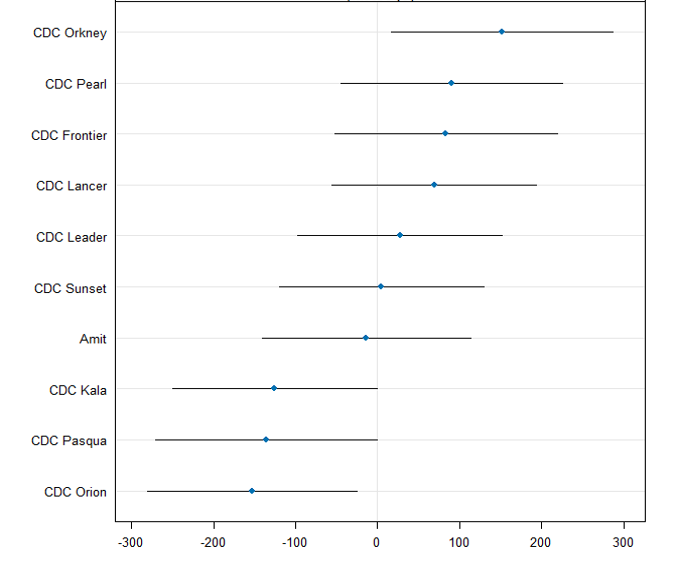
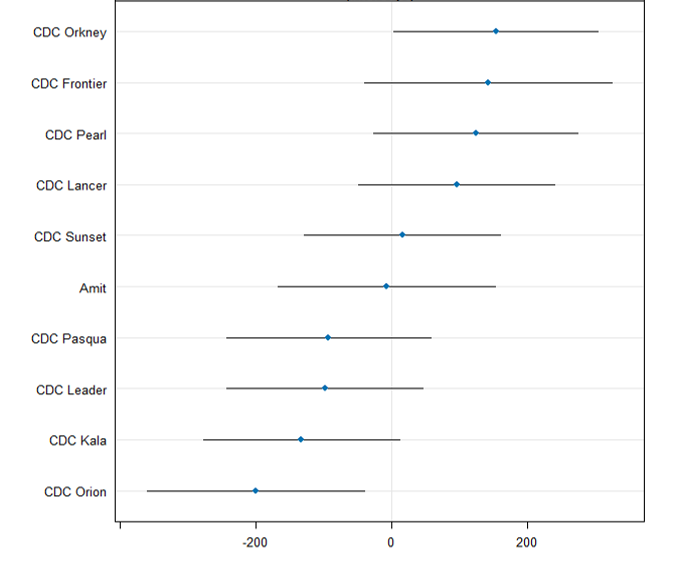
Figure 1. Relative yield ranking of kabuli and desi chickpea varieties from 6 years of Regional Variety Trial data in Saskatchewan in the brown (left) and dark brown (right) soil zones. Ranking is from BLUP (Best Linear Unbiased Prediction) statistical analysis.

